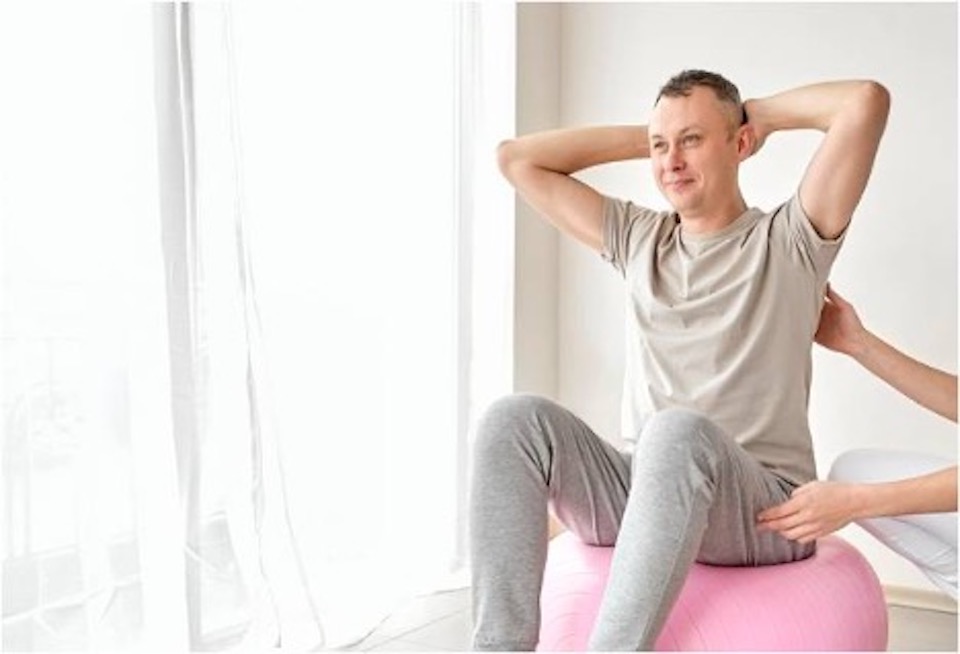Type Of Physical Therapy Exercises
There are various types of physical therapy exercises that help in achieving both of these objectives.
Musculoskeletal physical therapy
Also known as orthopedic physical therapy, this treatment falls under the category that aims to restore the functioning of the musculoskeletal system, including muscles, joints, ligaments, tendons, and bones. Musculoskeletal physical therapy focuses on –
- Reducing pain
- Correcting skeletal alignment
- Treating damage in soft tissues
- Improving mobilization
Geriatric physical therapy
Focusing on older adults, this branch of physical therapy exercise caters to specific needs that occur during old age. As people grow older, they experience disorders like arthritis, cancer, joint replacement, Alzheimer’s, osteoporosis, and balance disorders. The main goals of geriatric physical therapy are –
- Reducing pain
- Restoring mobility impacted by old age
- Improving overall wellbeing and physical fitness
- Helping inactive aging
Sports physical therapy

This niche branch of physical therapy exercise includes management of athletic and sports injuries through –
- Initial diagnosis and assessment of sports injury
- Treatment of the injury through personalized advice and techniques to promote healing
- Ensuring a quick return to the sport through rehabilitation and progressive injury management
- Advice on preventive practices like movement assessment to identify and address the known precursors to the injury
- Sharing specialized knowledge to sportsperson or athletes like taping technique to aid in the prevention of injury in future
Women’s Health

Physical therapy for women is a very specific area and requires particular physical therapy exercises to address health issues faced by women. These include childbirth, prenatal, postnatal care, fertility issues, etc. Physical therapy exercises for women focus on –
- Strengthening the core
- Reducing lower back, hip, and pelvic pain experienced during and after pregnancy
- Controlling urinary incontinence
- Activating pelvic floor
- Decreasing lymphatic swelling
- Prenatal and postnatal care
Rehabilitation and pain management
This can be divided into two categories –
- If you are experiencing chronic pain and are planning to go for surgery then this physical therapy exercise would help you in relieving pain.
- Treatment before the surgery helps in strengthening the body and preparing it for post-operative rehabilitation.
- Neurological physical therapy – This range of physical therapy exercises focuses on disorders affecting the nervous system like head injuries, stroke, damage in the spinal cord, sciatica, multiple sclerosis, Parkinson’s disease, and issues related to vertigo. Here the treatment focusses on –
- Correcting neural pathways
- Motor control
- Balance and coordination

Your Physical Therapist will suggest you the exercises depending upon the stage of your recovery. Range of Movement (ROM) exercises are commonly suggested forms of exercise in physical therapy. These exercises are advised for a specific joint where there is a reduced amount of movement. There are three types of Range of Movement exercises.
Passive Range of Motion Exercise (PROME)
Here, the Physical Therapist moves the limb along the joint range. It is mostly useful on patients who cannot move their limbs.
Active – Assistive Range of Motion Exercises (AAROME)
This Range of Motion Exercise is useful on patients who can move their limbs. But they need assistance to complete the joint range. Here, the role of the Physical Therapist is very important. He/she helps the patient to complete the movement and ensure that the pain is not worsened.
Active Range of Motion Exercise (AROME)
Here, the patient performs the physical therapy exercises without any physical assistance from the Physical Therapist. Though the Physical Therapist suggests and instructs the proper execution of the exercise, the patient performs all the exercise by himself.
If you feel or experience any pain in the body, please contact us and speak to our skilled and experienced Physical Therapists for an expert opinion.

